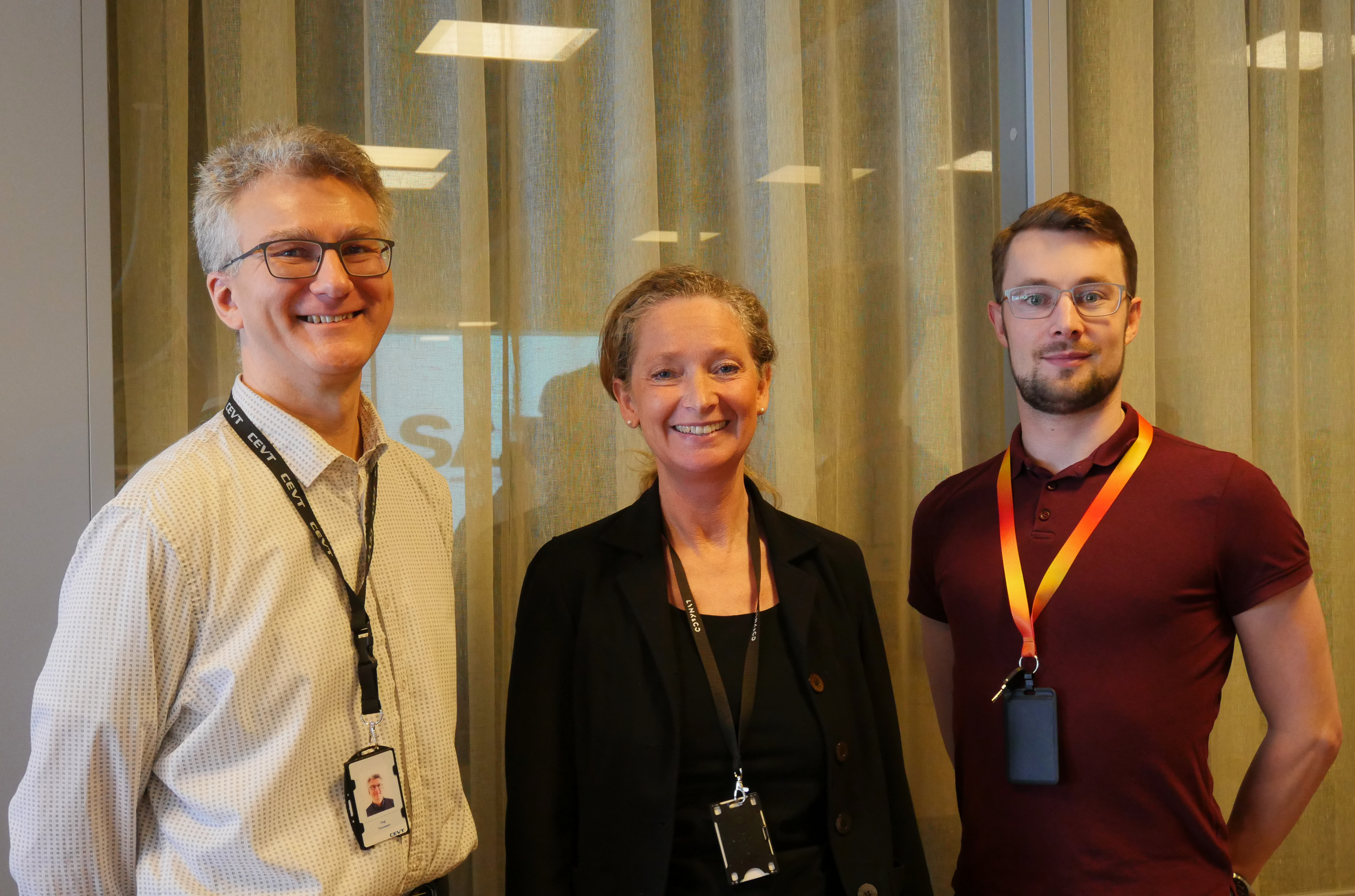CEVT and the future of safety
Reaching for new goals within Human Body Modeling, CEVT is taking the first steps towards a new branch of work. Dag Thuvesen, senior Manager Safety CAE and Jacob Fagerström, Master Student, both from CEVT, presented their plans in the field. Camilla Palmertz, Attribute Strategy Owner Lynk & Co, CEVT, took the opportunity to spread some news regarding the company and their collaborations at the SAFER lunch and networking seminar.
It was an eager gathering of seminar attendees who assembled, at the SAFER office, to expand their knowledge of CEVT and their recent work. The overall mood was expectant and cheerful as many have taken this weekly opportunity to meet and network to heart and return every week. First speaker of the day was Camilla Palmertz, CEVT. She has two important roles in the company, both as Attribute Strategy Owner at Lynk & Co and as Safety Research coordinator in the collaboration with SAFER.
CEVT, or China Euro Vehicle Technology AB, is an innovation center for the Geely Group, developing automotive technology for tomorrow’s global market. They are a somewhat recent addition to the SAFER community since their entry in April 2019. Their work is mainly focused on developing mobility solutions such as: Modular platform development, software development and virtual engineering, for all of the Geely Group brands. Specifically concerning modularity, they have a direct focus on the customer and their needs. They strive to always meet their customers from a safety, economic, environmental and flexible perspective. Most recently this work has resulted in the module platform CMA (Compact Modular Architecture).
After introducing the company and their news, Camilla Palmertz moved on to talk a little bit about Lynk & Co, a car brand based on the CMA platform. It is a platform on which the Volvo model XC40 is based, as well as some of the new Geely cars. Camilla informed that the car has not yet reached the European market. However, it was launched to the Chinese market 2017 and is thriving – specifically amongst the young customers and the so called ‘young urbanites’. Camilla also let the attendees of the seminar know that the Lynk & Co cars will soon also be driving on European streets, to the keen interest of the audience. She showed some examples of the current models, already launched to the Chinese market, and engaged the audience’s interest in the unreleased European models.
When Camilla Palmertz’s adduction was over, the audience immediately had some questions about Lynk & Co and its popularity. A general discussion engaged the question: “What makes a specific person like a specific type of car?”. Someone named design as a factor, another the brand reputation. But the statement closing the discussion might just be on to something, at least in terms of the likability of Lynk & Co:
“Young people like the car. Maybe it makes people feel young to drive it?”
With that statement, it was time for the next part of the seminar. Dag Thuvesen, Senior Manager Safety CAE, CEVT and Jacob Fagerström, Master Student at CEVT took the floor. As a part of CEVT’s recent investment in the field of human body modeling, the Gothenburg office took on Jacob Fagerström to do his master thesis in collaboration with Dag Thuvesen, Senior Manager Safety CAE. Together they presented the foundation of the thesis.
Using the Human Body Model VIVA, Jacob Fagerström will conduct a study of a rear end crash pulse. The VIVA model is developed specifically to be able to analyze impacts from behind and will, most likely, be perfectly suited for this type of study. VIVA is chosen for its carefully modeled skeletal parts such as the spine and neck, but also the intricate ligaments, amongst other details. Another reason for using VIVA is the ability to use a female model. Human body models, and crash testing including female specifications, is still underrepresented in research but overrepresented in traffic injury statistics. Jacob strives towards a more equal representation to improve the safety of women in traffic.
The final purpose of the research is to increase safety in car seats. Create a seat with better, and safer, qualities. The order of conduct of Jacob Fagerströms master thesis was to first position the model in two opposing positioning methods: Prescribed Displacement Method and Marionette Method. The conclusion was to use the Marionette Method. Secondly, a setup simulation with a generic seat. The objective is to investigate the stiffness of the seat, and neck rest, to find how the individual parts of the seat affect the simulated injuries. Thirdly, after the generic seat has been tested, the same test will be conducted on a seat from one of the models in the Lynk & Co line. The reasoning behind that is to investigate if the ‘real’ and the generically developed seat behaves differently. The test results of the different seat models will then be compared, and the results of the comparison analyzed.
Members of the audience immediately offered their feedback and experience in the field when the presentation was completed. Jacob Fagerström was offered input and reading material from completed studies and papers in the same field. This is a good example of the very core of the SAFER community, and the possibilities for current and future partners.
To quote Dag Thuvesen: “SAFER is a possibility for us at CEVT. Both me, and Camilla (Palmertz), have fought for this collaboration. I think it’s important to build knowledge and contribute in this way.”
The results of Jacob Fagerström’s work will be compiled for the completion of his master thesis, late May 2020. Hopefully, there will be a follow up presentation of the results at SAFER to be shared with the community.
In the photo from the left: Dag Thuvesen, Camilla Palmertz and Jacob Fagerström
Text: Ellinor Claesson

